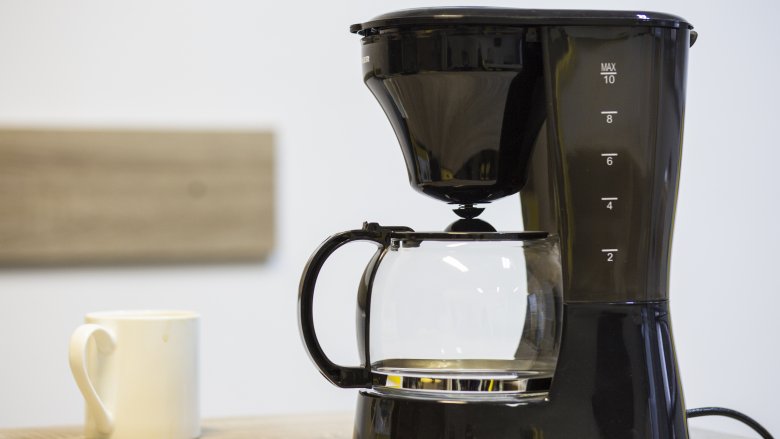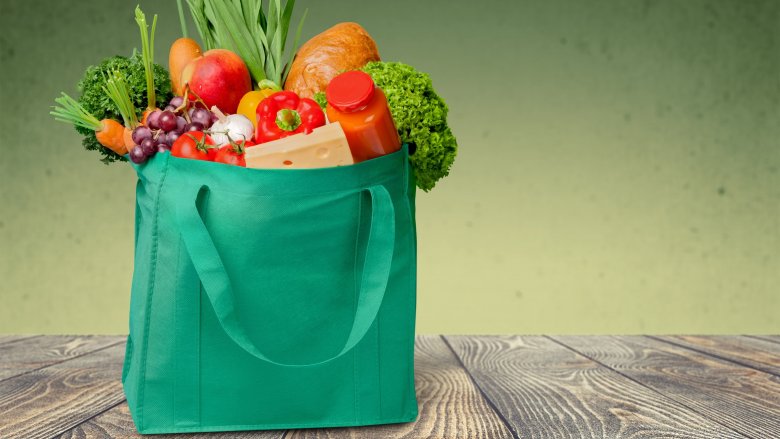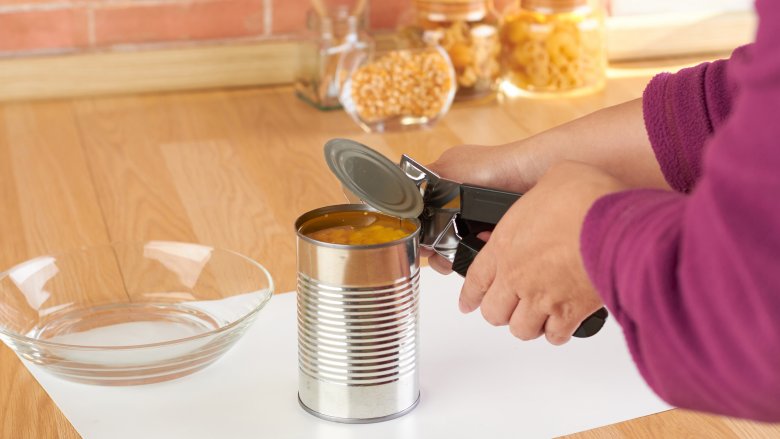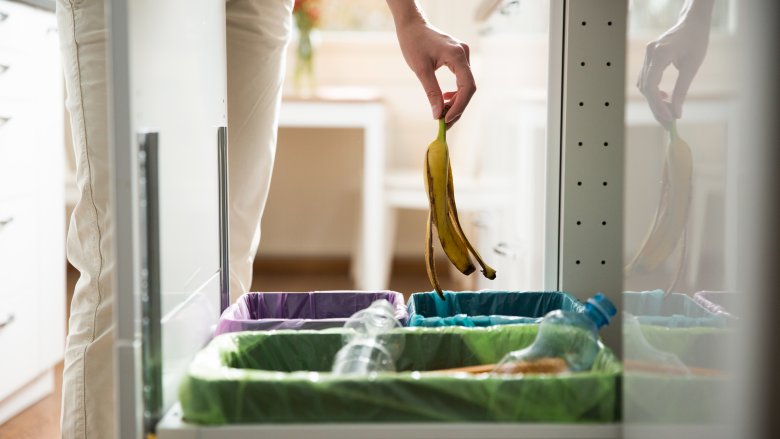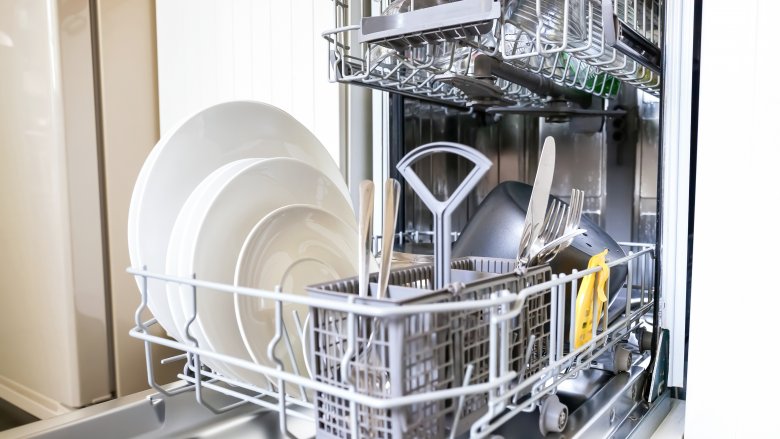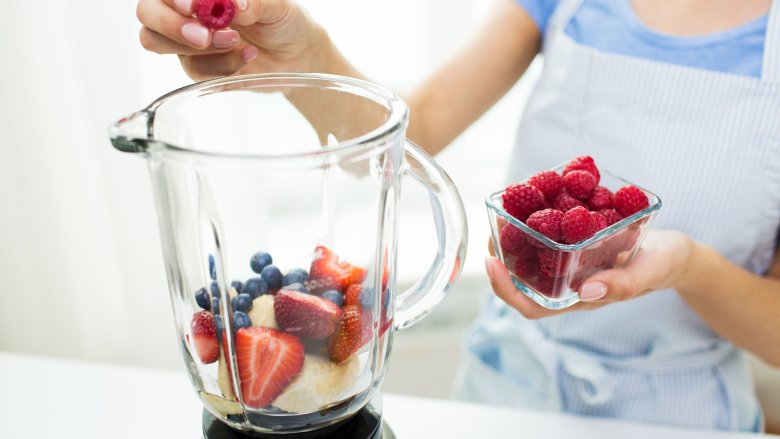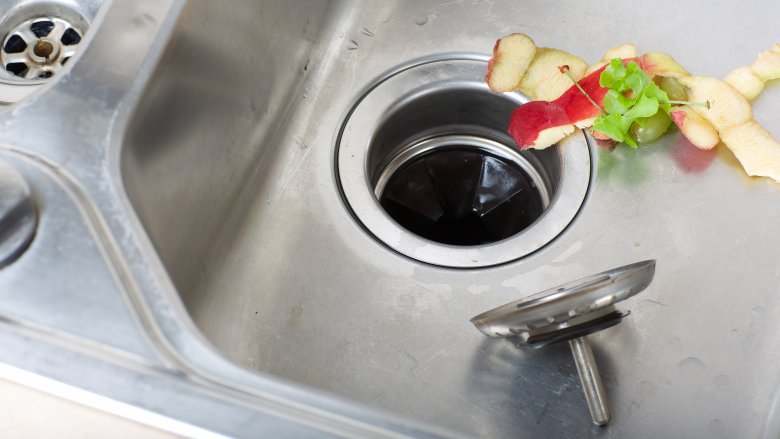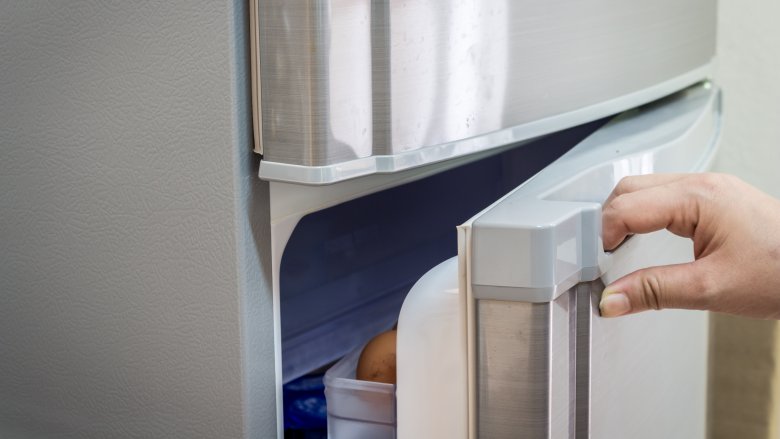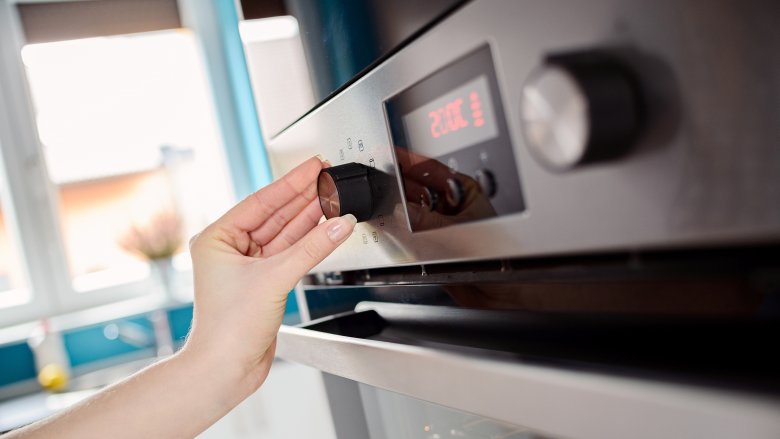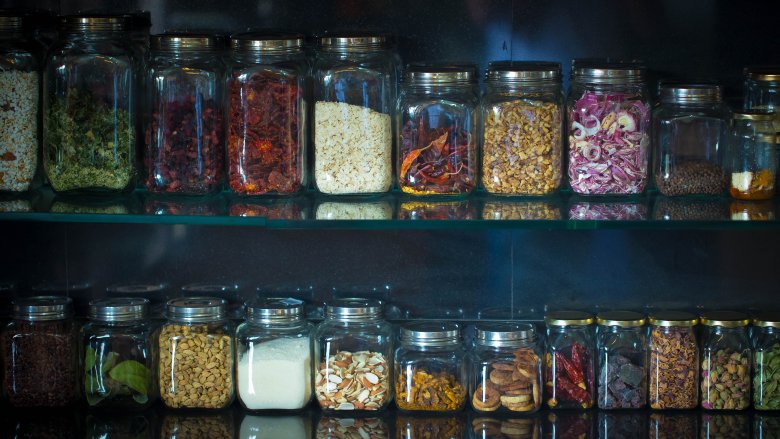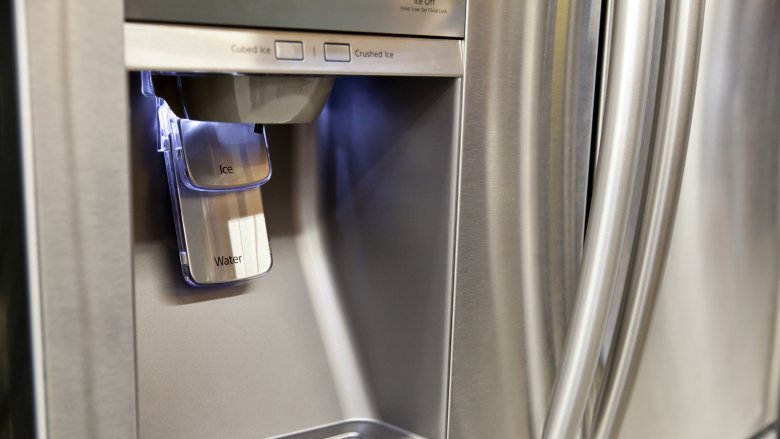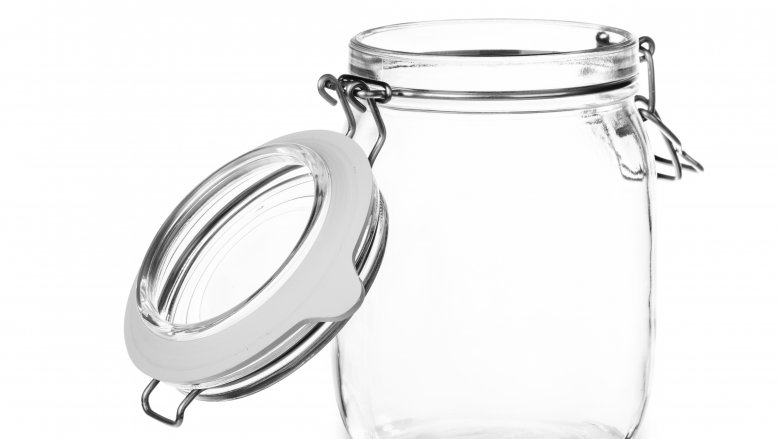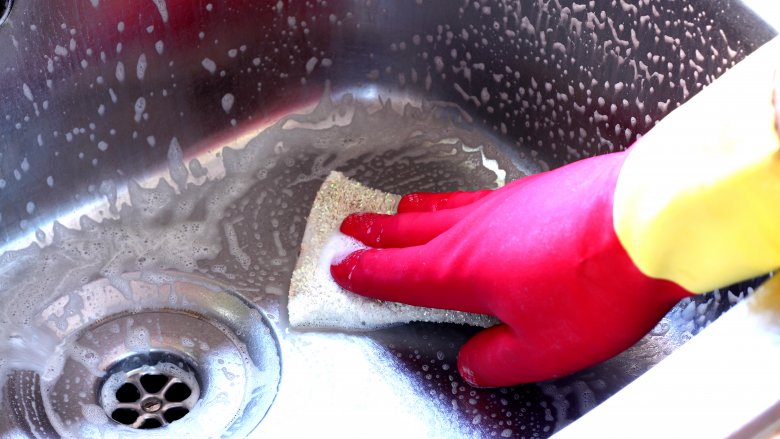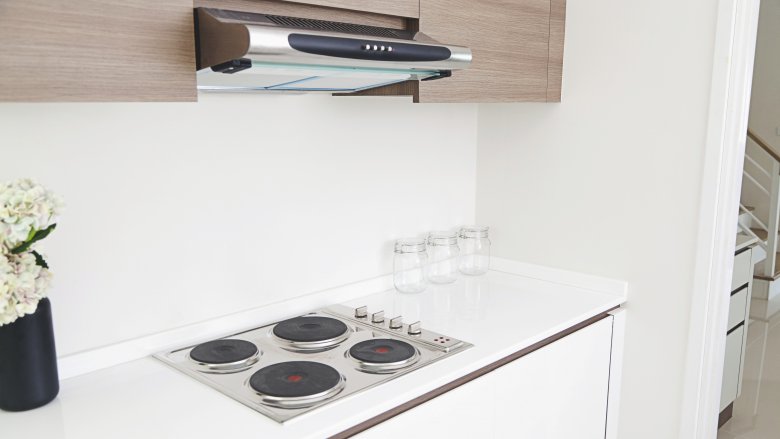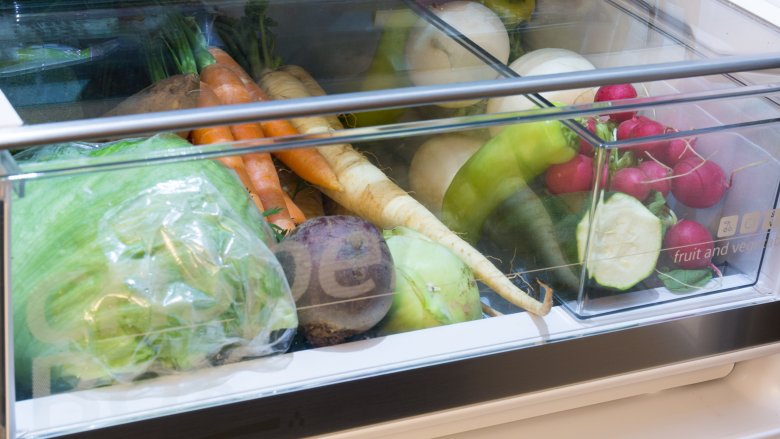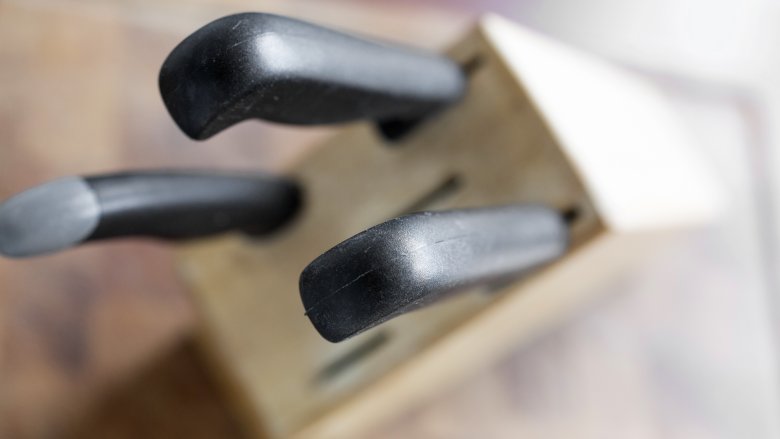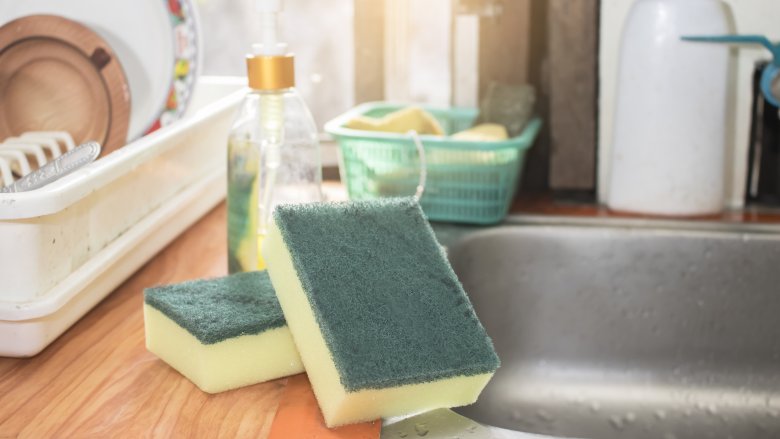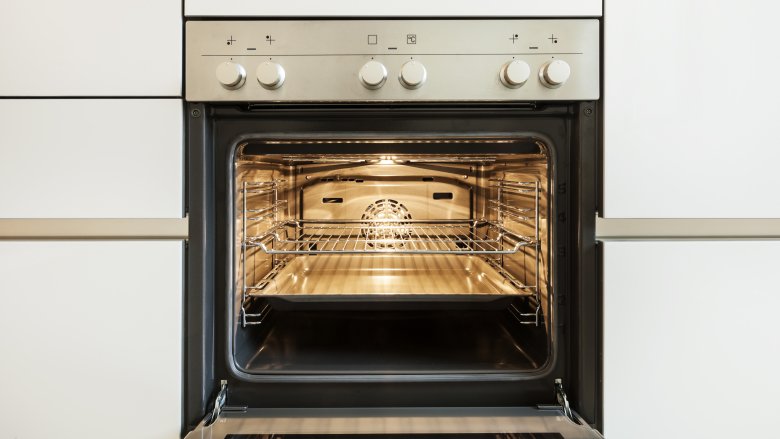Things In Your Kitchen You Never Clean — But Should
You clean your kitchen pretty regularly, but there are — almost certainly — some parts of your kitchen that you just never get to. Whether it's because you don't think of them or just don't think they need to actually be cleaned, there are a whole bunch of things in your kitchen that you never clean, but definitely should from here on out. Some of these things are just about the hands-down dirtiest parts of your kitchen, you just never knew it. Gather your cleaning supplies, here are all the places in your kitchen that probably need a good soak or scrub.
Coffee reservoir
You make coffee every morning and clean up the cups and pot, but how often do you clean the inside where you put the coffee (aka the coffee reservoir)? According to a 2011 study conducted by NSF International, coffee reservoirs can have even more germs than your toilet seat — yes, you read that right. Use white distilled vinegar to get the inside of your coffee maker squeaky clean.
Reusable grocery bags
Bringing your own grocery bags to the store is good for the environment and more sustainable in the long run, but you really do need to clean them from time to time. According to Good Housekeeping, you can make sure they're clean by regularly tossing them into the washing machine, just make sure you choose the right settings based on the fabric of your bags. Then make sure to dry them thoroughly before using again.
Can openers
Raise your hand if you've ever clean your can opener. Most people don't, but everybody should. According to a 2013 study conducted by NSF International, a public health and safety organization, mold, yeast, E.coli, and salmonella were all found on can openers that hadn't been regularly cleaned, which could cause big health issues, especially for those who are most at-risk, such as the very young, very old, and those with compromised immune systems. If yours is dishwasher-safe, you're in luck because cleaning it is, of course, extremely easy. If yours isn't, however, it's still pretty easy to clean. Just hand wash in hot, soapy water like you would anything else.
Trash can
Your trash can needs to be cleaned, for sure. While you've likely wiped it down here and there if you notice that the outside has gotten a little grimy, the inside probably needs to be well-cleaned, as well. In an interview with Thrillist, Meg Roberts, president of Molly Maid, said storing bags in the bottom of the can, underneath the bag you're using is one way to prevent you from forgetting to replace the bag. Scented bags can help mask any smells that might be emanating from the food or packaging thrown in there, too. Finally, scrubbing with hot, soapy water, baking soda (again for the smell), or other cleaning products can help.
Inside the dishwasher
This one, again, is probably a little counterintuitive, but, in an interview with Today, Melissa Maker, the founder of Clean Your Space, said that food, grease, and the like can get trapped in the far reaches of your dishwasher, slowing it down and making it smell. Maker said the first step to a clean dishwasher is to remove the filter and clean it separately before cleaning and sanitizing the dishwasher itself. All you need is a little bit of vinegar, baking soda, and a cycle through of hot water.
Blender gaskets
That little rubber ring around the bottom of your blender is called a gasket and it's what prevents all the liquid from pouring out. According to NSF International, in 2013, NSF researchers found blenders to be the third germiest item in homes. Salmonella, E. coli, yeast, and mold were found on blender gaskets, all of which could make you sick. Make sure you disassemble and thoroughly clean the blender with extremely hot water (and soap) each and every time you use it so your blender stays clean and you and your family stay healthy.
The ring around the garbage disposal
Putting citrus peels, baking soda, and white distilled vinegar down your garbage disposal can help your sink (and, by extension, your kitchen) smell better, but you're probably missing the actual cause of the smell. In an interview with Thrillist, Roberts said that usually it's actually the ring around the disposal, and not the disposal itself, that reeks. Roberts said to wipe it all down or to soak it in a mixture of vinegar and water to clean it all up and get rid of the smell.
Refrigerator coils
Though you may never seen them, the coils on your refrigerator can get a little bit dusty and really should be cleaned from time to time. Unlike some of the other things on this list, it's not because of appearance or due to the potential of food borne pathogens. According to Today, wiping down the coils on your refrigerator once every six months or so can help keep your refrigerator running longer and maximize its cooling efficiency. As Maker told Today, make sure you unplug your refrigerator first and then plug it back in as soon as you're done. Since it's not a time-intensive project, everything in your fridge should be just fine.
All the knobs and handles in your kitchen
Every knob and handle in your kitchen, from cabinet pulls to stove knobs and everything in between, need to be cleaned regularly. Think about how many people touch those things with dirty hands nearly every day. According to a 2011 study conducted by NSF International, stove knobs came in at number nine on the list of the Top 10 Dirtiest Household Items. Additionally, a 2014 study published in the journal Food Control found that knobs and handles had one of the highest concentrations of isolates from E. coli, listeria, staphylococcus, and enterobacteriaceae, all of which can make your family very sick. Wiping them down regularly with white distilled vinegar, a diluted bleach solution, or another sanitizing product can help minimize the number of potentially dangerous pathogens.
The spice rack
Your spice rack can start to get a little musty as it fills with jars and other containers of spices you've only used a handful of times since buying them four years ago. Spices, like just about everything else in your kitchen, have a shelf life. In culinary school we learned not to keep them lying around for more than a year or two, because otherwise the flavor will likely be affected. According to Thrillist, here's how you should tackle your spice rack: Toss dried herbs and spices that have been languishing on the rack for years, clean up any spills or stains from particularly potent offenders, and add a box of baking soda to catch any stray odors.
The refrigerator water dispenser
According to a 2013 study conducted by NSF International, the refrigerator water dispenser was the number one germiest item in the kitchen. Rather than the dangerous pathogens, the issues with the refrigerator water dispenser had more to do with mold and yeast, which can spell disaster for people with allergies, as those are likely to cause reactions. If you have a refrigerator water dispenser that you rarely (ever?) clean, check your fridge manufacturer's instructions for cleaning it or, according to HuffPost, use something like vinegar, which, won't pose any health problems after being cycled through the system.
Food containers with rubber seals
According to Reader's Digest, rinsing these containers isn't enough to ensure that bacteria won't grow. If your containers are dishwasher safe, throw them in with your next load of dishes to make sure there aren't any germs hanging around. If they aren't, hand wash each contain and lid with hot, soapy water, making sure you're getting the grooves in the lid really well to get at any germs that are hiding there.
The tops of your cabinet and refrigerator
The tops of your kitchen cabinets or refrigerator likely are coated in all manner of dust, grease, and who knows what else, and rarely get cleaned. The first thing you need to do when you're getting ready to give the tops of your cabinets and refrigerator a good cleaning is to make sure there isn't any food out on the counters or table. Disturbing the layer of dust that's up there could potentially cause it to get into the food if there's any laying around. After you get up there and clean, you'll likely also want to know how to keep it cleaner or make the process simpler. According to Apartment Therapy, putting a layer of wax paper on the tops of your cabinet and refrigerator can collect all the gross stuff that would otherwise need to be scrubbed off. Every few months, climb up there and replace the sheets, tossing out all that gross stuff along with the paper.
The sink and sink drain
Cleaning your sink drain is pretty simple. In an interview with Thrillist, Melissa Maker, founder of Clean My Space, said if you have flies or a stinky drain, pour a cup of baking soda down the drain, let it sit for about half an hour, and then follow it up with white distilled vinegar. The mixture will bubble up, neutralize odors, and clean that sink drain. While you're there, get ready to clean your entire sink because it's pretty germy. According to a 2011 study conducted by NSF International, coliform bacteria (the same family as salmonella and E. coli) were found in nearly half of all sinks that were tested. Not good. Scrub it well with disinfecting solutions regularly.
The stove exhaust filter
Think of how hard your stove exhaust filter works every day, how much grease it catches, how much other gunk must also be stuck in there. Now think about how often you clean it. When I worked at a cooking school, we cleaned our hardworking stove exhaust filters nearly everyday. According to Thrillist, taking down the filter and soaking it in OxyClean and then cleaning and wiping will get all that gunk out, which should hopefully also eliminate any weird kitchen odors you can't decipher or figure out where they're coming from.
Salt and pepper shakers
If you never really clean your salt and pepper shakers, but notice you get sick a lot, they could be the culprit. According to a 2008 study conducted University of Virginia researchers (via WebMD), salt and pepper shakers are likely carriers of the viruses that can cause the common cold. To keep yourself and your family healthy, wipe down the salt and pepper shakers (and any other spices you might be using) every day and don't forget to wash your hands.
Refrigerator door seal
Let's face it, you probably never clean your refrigerator door seal, but maybe you should start. According to a study conducted by NSF International, some refrigerator door seals tested had listeria present, which may have been caused by accidental contamination from produce. Additionally, that handle (like all the others in your kitchen) can have coliform bacteria on it, not to mention other yucky molds, spores, and the like. Clean with white distilled vinegar, a sanitizing solution, or another kind of disinfectant to eliminate the risks posed by pathogens that can make you sick.
Refrigerator drawers
Cleaning up any spills or leaks that happen in your refrigerator drawers is super-important, but even if your food never spills or leaks, the drawers still need to be cleaned regularly. In an interview with CBS News, NSF International microbiologist and senior project manager Lisa Yakas said researchers found E. coli, salmonella, listeria monocytogenes, and more within the refrigerator drawers they studied. Those contaminants can cause serious food-borne illnesses, so definitely keep that in mind next time you're cleaning your kitchen.
Knife block
To be fair, if you're very particular about cleaning your knives — and putting them away clean and fully dry — it's probably never even occurred to you that the place that houses your knives day in and day out needs a good cleaning of its own, but according to Reader's Digest, you should give it a good scrub as well as sanitize it. To clean, wash in hot, soapy water and use a small brush to scrub each slot. Rinse well, then mix up a sanitizing solution of diluted bleach. Let it dry out well before replacing the knives. Also, as Reader's Digest pointed out, that type-A care you give your knives likely does in fact mean it's not as germ-ridden as its counterparts in other houses. Keep doing what you're doing.
Kitchen sponge
That's right, you need to regularly clean (and change and discard) the tool you use to clean everything else. According to Good Housekeeping, you can clean your kitchen sponge by soaking it in a diluted bleach solution, running it in the dishwasher, or throwing it in the microwave. The dishwasher and microwave work because the heat kills any lingering germs. As Good Housekeeping noted, make sure the sponge is soaked in water before putting it in the microwave, otherwise it could catch fire, which will kill the germs, but is definitely not what you want. If you use a cloth, regularly toss it in the washing machine to keep it clean.
The bottom of the oven
Between grease, spills, stray veggies, and everything else, the bottom of your oven is probably kind of gross. According to Martha Stewart, regularly cleaning the bottom floor of your oven — either with a commercial oven cleaner or a DIY version — can help remove any unwanted smells or flavors that have been hanging around as long as that spill. Clean it up for better, tastier food.
